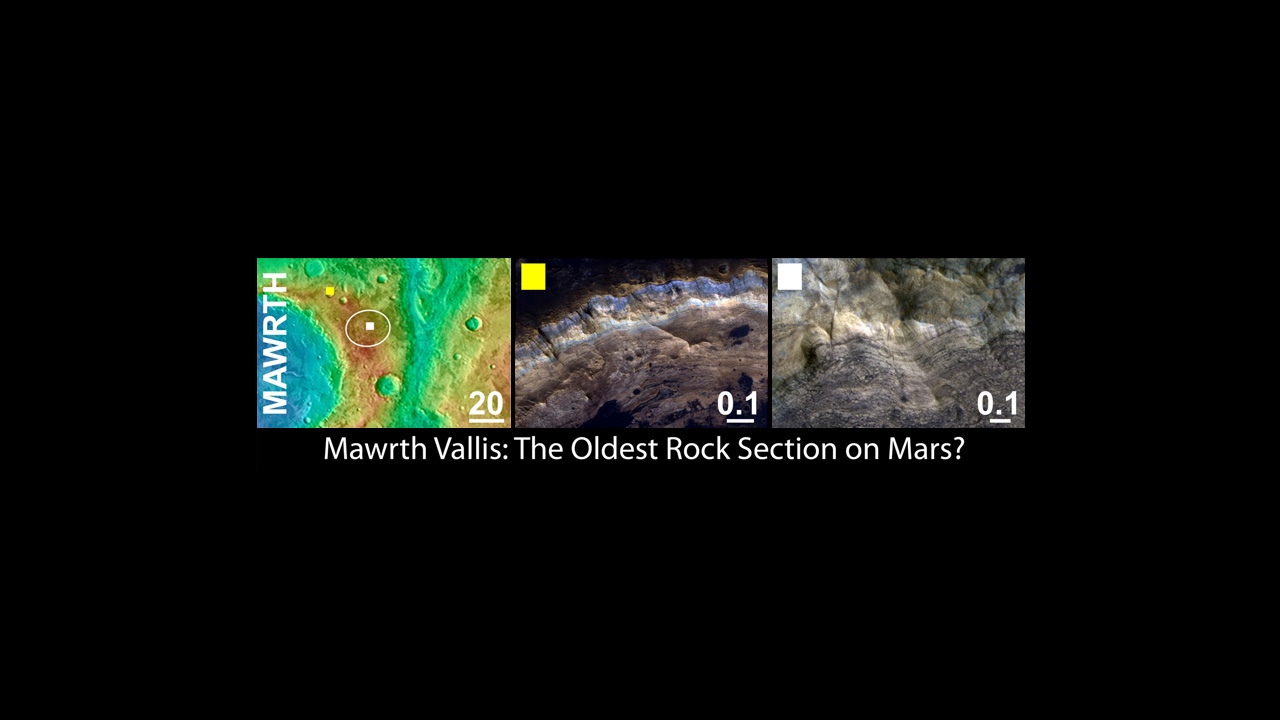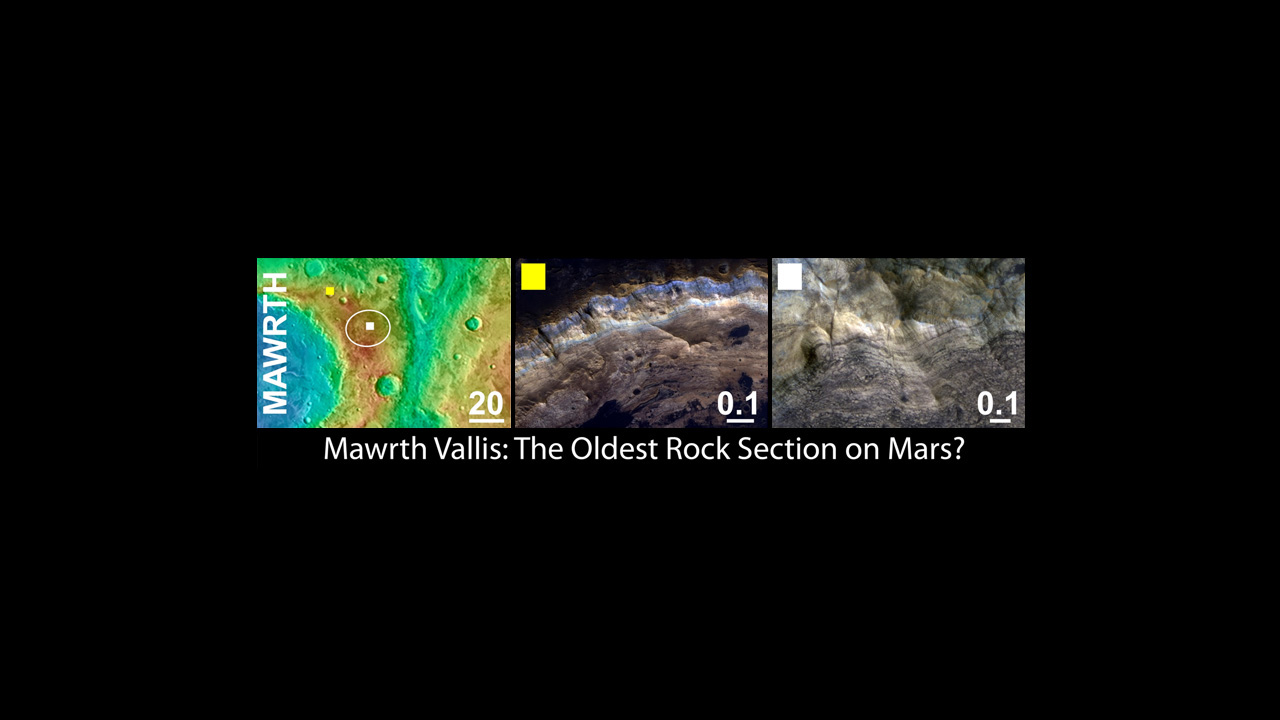Mawrth Vallis, a Finalist Not Selected as a Landing Site for Curiosity

| Credit | NASA/JPL-Caltech/UA |
|---|---|
| Language |
|
Mawrth Vallis was considered as a landing site for NASA's Mars Science Laboratory mission. If it had been selected, rather than Gale crater, the mission’s rover would have been sent to land in the Mawrth valley directly on a layered sequence of clay-bearing rocks that extend across the surface of the region.
The left panel shows the regional context of the Mawrth Vallis target landing ellipse with colors representing the elevation of the surface features (purple lowest and red highest). The yellow box indicates the location of the feature shown in the center panel. The white box indicates the location of the feature shown in the right panel. The scale bars in each panel indicate distance in kilometers.
The middle panel shows an example of a high priority science target for exploration near the ellipse, and the right column shows science targets within the ellipse. Mawrth Vallis and each of the three other finalist landing sites display a variety of very interesting targets for exploration within and outside of the proposed landing ellipse.
The images in the middle and right panels are from the High Resolution Imaging Science Experiment camera on NASA's Mars Reconnaissance Orbiter. The University of Arizona, Tucson, operates the High Resolution Science Imaging Experiment. NASA's Jet Propulsion Laboratory, Pasadena, Calif., manages the Mars Science Laboratory and Mars Reconnaissance Orbiter missions for NASA's Science Mission Directorate.

